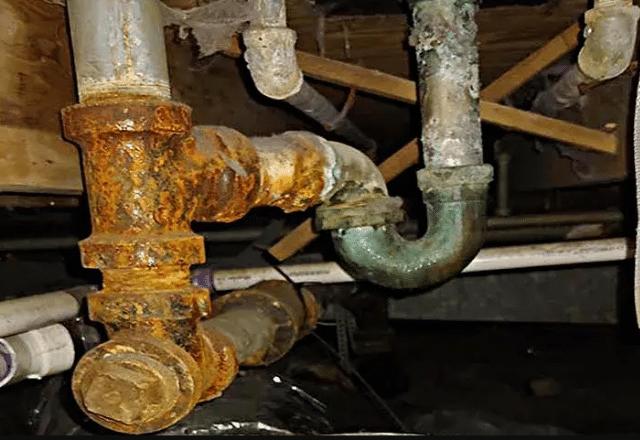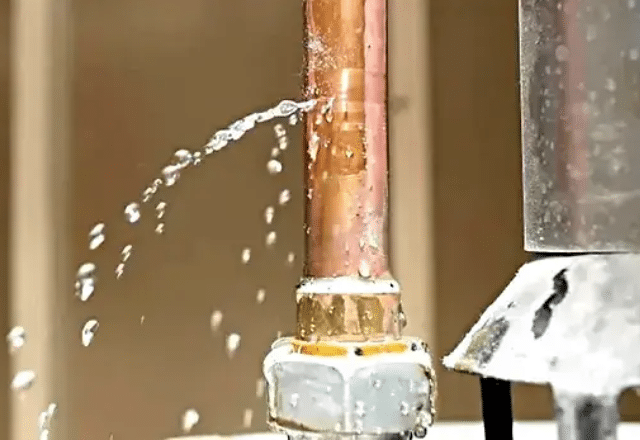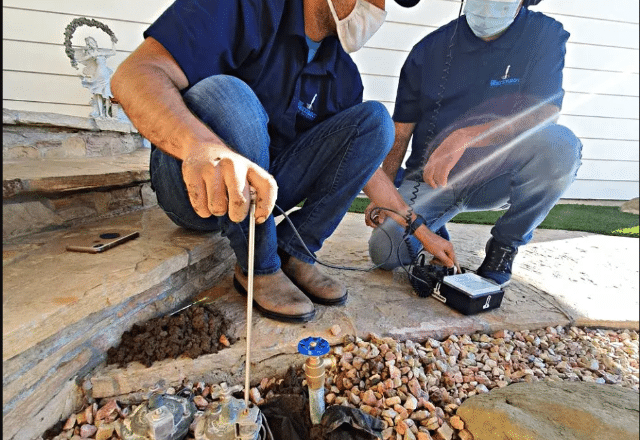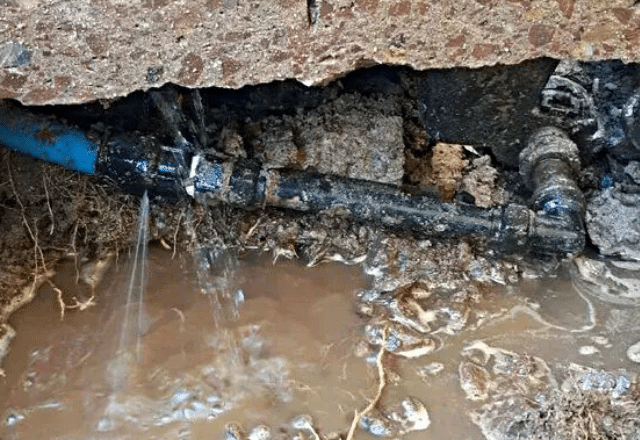
Pipe leak detection is the process of identifying and locating leaks in pipes, be it in residential, commercial, or industrial settings. It involves using various tools and techniques to detect the presence of leaks in plumbing systems and pipelines, preventing water loss, property damage, and potential health hazards. Timely and accurate detection of pipe leaks is crucial to maintaining the integrity and efficiency of the plumbing infrastructure, and ultimately, to preventing costly and disruptive repairs. From acoustic listening devices to infrared cameras, modern pipe leak detection methods have evolved to provide accurate and non-invasive solutions for identifying and repairing leaks in pipes of various materials and sizes.
There are several different types of leak detection methods used in various industries.
1. Hydrostatic testing: This method involves filling the pipeline with water or another liquid and then increasing the pressure to check for any drop in pressure, indicating a leak. It is effective in detecting leaks but can be time-consuming and requires the pipeline to be out of service during testing.
2. Tracer gas leak detection: This method involves injecting a gas, such as helium or hydrogen, into the pipeline and then using specialized equipment to find if the gas escapes, indicating a leak. It is highly sensitive and can detect very small leaks, making it an effective method for detecting leaks.
3. Supervisory Control And Data Acquisition (SCADA) system: SCADA systems monitor the pipeline for any anomalies or changes in pressure, flow, or temperature that could indicate a leak. It provides real-time data and can quickly detect and locate leaks.
4. Computational Pipeline Monitoring System (CPM): CPM systems use complex algorithms and mathematical models to analyze data from the pipeline and detect any abnormalities that could indicate a leak. It is an effective method for finding leaks and can also help to predict potential failure points.
Each of these methods has its own strengths and limitations, but when used in combination, they can provide a comprehensive approach to leak detection.

Water leaks can lead to significant property damage and increased water bills if not promptly addressed. Understanding the common causes of water leaks can help homeowners and property managers identify and resolve issues before they escalate. From aging plumbing systems to faulty appliances, there are several key factors that contribute to water leaks. By being aware of these common causes, individuals can take proactive measures to prevent water damage and save on repair costs.
To check for leaks around the washing machine and other appliances in your home, start by visually inspecting the area around the appliances for any puddles or signs of water leakage. This includes checking under the washing machine, water heater, and dishwasher for any standing water.
Next, inspect the water supply lines and connections to each appliance for any signs of leaks, such as water dripping or pooling around the hoses or pipes.
If you spot any leaks or puddles, immediately turn off the water supply valve to the affected appliance to prevent further water damage. Then, call a plumber for assistance to properly address the issue.
In addition to the appliances, also check for leaks under kitchen, laundry, and bathroom sinks, as well as around tubs, toilets, and showers. Addressing leaks in a timely manner can help prevent water damage to your home and save you from costly repairs.
By regularly checking for and addressing leaks and puddles around your appliances, you can help maintain the safety and integrity of your home’s plumbing system.

Pinhole leaks in pipes can be fixed by first identifying the location of the leak. Look for signs of water droplets or dampness on the pipe. Once located, turn off the water supply to prevent further leakage.
For a permanent fix, it is best to replace the affected section of the pipe. However, for a temporary solution, you can use a silicone or rubber repair tape designed specifically for pipe leaks. Wrap the tape tightly around the leaking area according to the manufacturer’s instructions.
Always remember to call a plumber for professional assistance if needed, especially if the pipe is in a hard-to-reach or high-pressure area. Pinhole leaks may be indicative of a bigger issue with the pipes, so it’s important to have a professional assess the situation.
Frozen pipes and ice buildup pose significant risks to the integrity of a building’s plumbing system. When water freezes, it expands, potentially causing pipes to burst and resulting in costly water damage. In the context of plumbing leak detection and automatic shutoff systems like the FloLogic System, frozen pipes can hinder the detection of leaks and make it difficult for automatic shutoff systems to function properly. This can lead to undetected leaks and extensive water damage.
To prevent damage from frozen pipes, it is crucial to take proactive measures. Implementing low temperature alerts can help property owners monitor the temperature of their pipes and take action before freezing occurs. Additionally, automatic shutoff systems can be programmed to activate when temperatures drop to a certain level, preventing further water damage in the event of a pipe burst. Regularly insulating vulnerable pipes and ensuring proper insulation in attics, basements, and crawl spaces can also help prevent freezing.
By taking these specific measures to prevent frozen pipe damage, property owners can protect their plumbing systems and minimize the risk of costly repairs and water damage. Investing in advanced leak detection and automatic shutoff systems like the FloLogic System can provide added protection and peace of mind.
Identifying and fixing cracked seals in pipelines is a crucial maintenance task to prevent leaks and ensure the integrity of the pipeline. The first step is to identify the location of the crack, which can be done through visual inspection or the use of inspection tools such as a pipeline inspection gauge. Once the broken pipe segment is located, the next step is to turn off the pipeline to prevent any further leakage.
After the pipeline is shut down, a suitable sealant is used to repair the crack. The type of sealant used will depend on the material of the pipeline and the extent of the damage. Common sealants include epoxy, polymer-based sealants, and silicone sealants. The sealant is applied to the cracked area and allowed to cure according to the manufacturer’s instructions.
Once the sealant has cured, the pipeline is tested to ensure that the crack is properly sealed and there are no leaks. This may involve water pressure testing or using leak detection equipment. It is important to ensure that the sealant has effectively repaired the crack to prevent any future issues. Regular maintenance and inspection of pipelines is essential to identify and fix any cracked seals to prevent leaks and ensure the smooth operation of the pipeline.

Water leaks within water pipes often remain undetected, leading to substantial wastage, increased utility bills, and potential structural damage. Detecting hidden water leaks in pipelines, regardless of their size or location, is crucial to mitigate these issues. Fortunately, various methods and technologies exist for efficient water leak detection, each with its own set of advantages and techniques.
Acoustic sensors are widely used for water leak detection due to their effectiveness in identifying leaks based on sound. These sensors pick up subtle noises generated by water escaping through leaks in pipes. By utilizing sensitive listening devices or ground microphones, professionals can pinpoint the location of potential leaks. This method is particularly effective for identifying leaks in hidden areas or underground water pipes. However, it may sometimes generate false alarms or struggle in detecting small leaks.
Regular monitoring of water meters can also serve as an indicator of potential leaks. A sudden increase in water usage, measured in gallons of water, without a corresponding change in household consumption patterns, might signify an ongoing leak. Comparing water usage trends with typical consumption levels helps in identifying hidden leaks within the water pipe system.
Advanced pipeline leak detection systems incorporate various technologies such as acoustic leak detection, ultrasonic leak finders, and fiber-optic cables. These systems continuously monitor the pipeline, identifying changes in pressure, flow rates, or temperature that might indicate a leak. They can pinpoint the exact location of the leak, even in underground or hard-to-reach areas, reducing the risk of structural damage and water loss.
In situations where traditional methods might not suffice, injecting helium into the pipeline and using specialized detectors can help identify even the smallest leaks. This method is highly sensitive and useful for detecting leaks in plastic pipes, pipe fittings, or identifying silent leaks that are otherwise challenging to detect.
Utilizing pipe probes or ultrasonic leak detectors helps in detecting leaks by transmitting sound waves through the pipe. When encountering a leak, these devices can pick up frequencies or changes in sound patterns, aiding in locating the exact source of the leak.
While each method of water leak detection possesses its own advantages, combining multiple techniques or utilizing sophisticated leak detection technologies provides a more comprehensive approach to identifying and addressing water leaks in water pipe systems. Understanding the materials used in pipes, the potential sources of leaks, and employing appropriate detection methods greatly enhances the efficiency and accuracy of leak detection processes. Early detection and prompt repair of leaks not only conserve water but also prevent extensive damage to infrastructure and property.

Leak detection systems play a crucial role in helping pipeline controllers detect and localize leaks. These systems use a combination of sensors and field instrumentation to monitor internal and external pipeline parameters, such as pressure and flow rate. This allows controllers to quickly identify the location of a leak and take appropriate action to minimize the potential impact.
There are different types of leak detection systems available, including internal and external monitoring systems, as well as software-based systems that analyze data from field instrumentation. These systems use a range of technologies, such as acoustic, infrared, and pressure-based sensors, to detect leaks and potential weaknesses in the pipeline infrastructure. By utilizing these advanced technologies, pipeline operators can effectively monitor their pipelines and ensure early detection of leaks, thus minimizing the risk of damage and maximizing safety.
Q: What is the primary advantage of using acoustic sensors for pipe leak detection?
A: Acoustic method is effective in identifying water leaks by detecting sound variations, pinpointing potential leaks even in hidden or underground pipelines.
Q: How do pipeline leak detection systems work, and what benefits do they offer?
A: Pipeline leak detection systems continuously monitor pipelines, analyzing changes in pressure, flow rates, or temperature. They provide early detection of leaks, pinpoint their exact locations, and prevent potential structural damage or water loss.
Q: What makes helium leak detection a valuable method in identifying water leaks?
A: Helium leak detection is highly sensitive and ideal for detecting even the smallest leaks in plastic pipes or fittings, allowing for the identification of silent leaks that might be challenging to detect using traditional methods.
Q: How does a multimode leak detector contribute to leakage detection in pipelines?
A: A multimode leak detector employs various sensing modes, such as acoustic, thermal, and visual detection, enabling comprehensive identification of leaks and assisting in pinpointing the exact source of the leaks within the pipeline.
Q: Why is determining the period of time a leak has existed crucial in addressing water leaks?
A: Assessing the period of time a leak has persisted aids in understanding the potential severity of the issue. Timely detection and repair of leaks, regardless of their size, help prevent further damage to the infrastructure and conserve water resources.
I bring over 9 years of dedicated plumbing experience to the table. As a seasoned professional in the plumbing industry, I've tackled a wide range of projects, from residential repairs to large-scale commercial installations.

